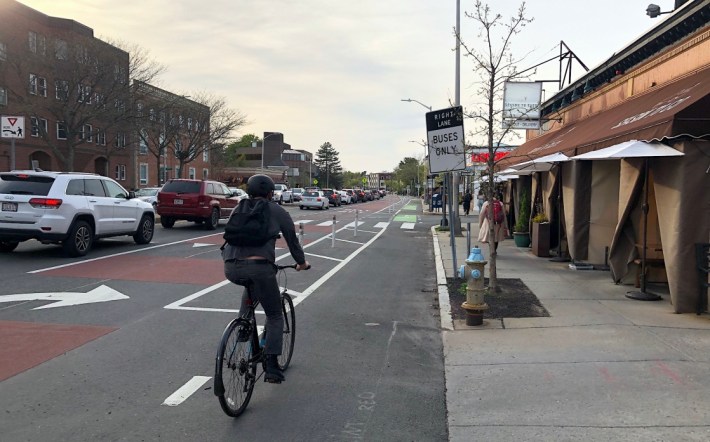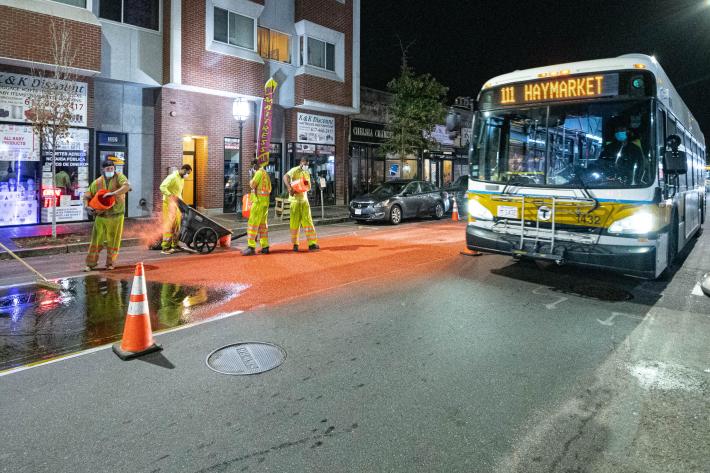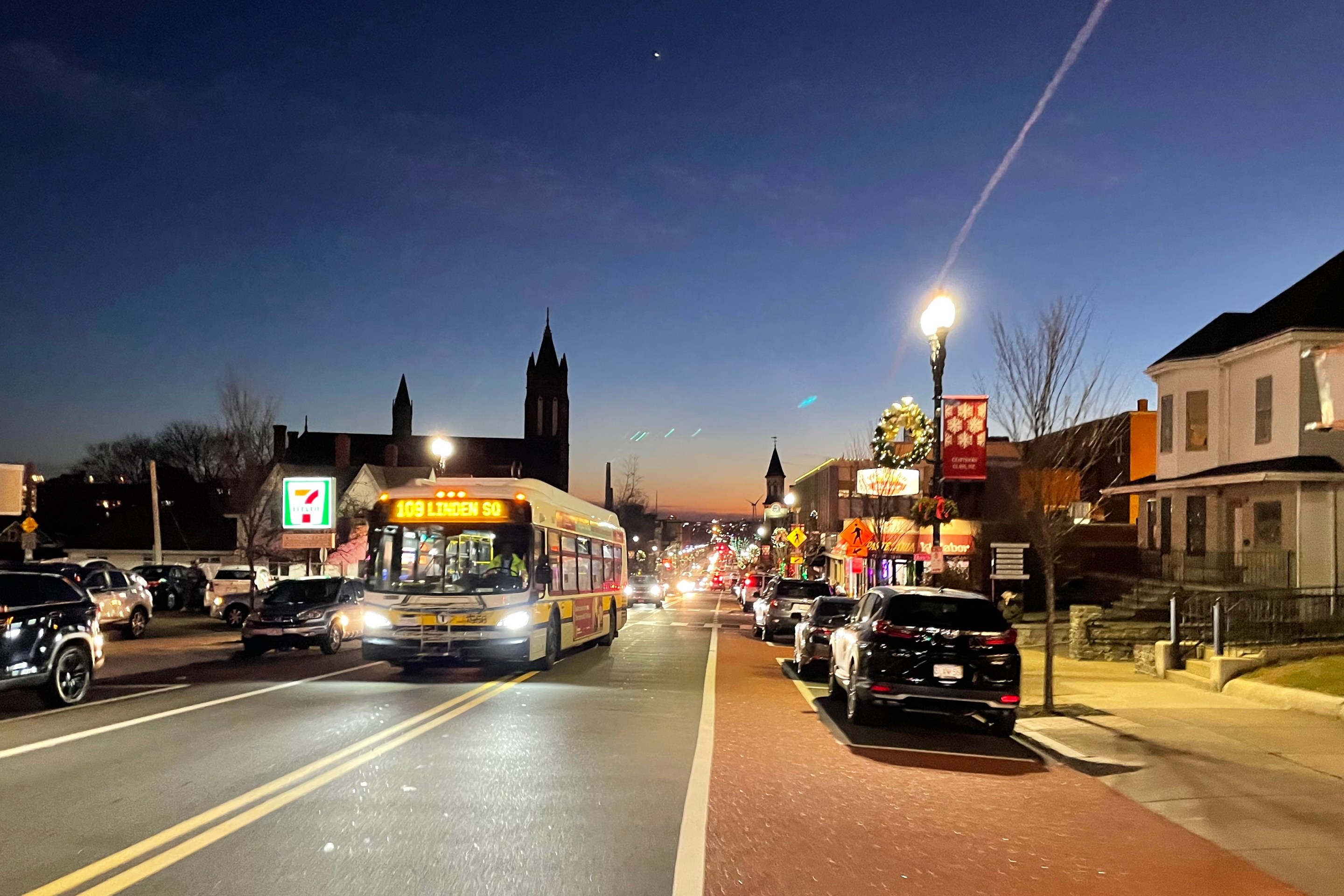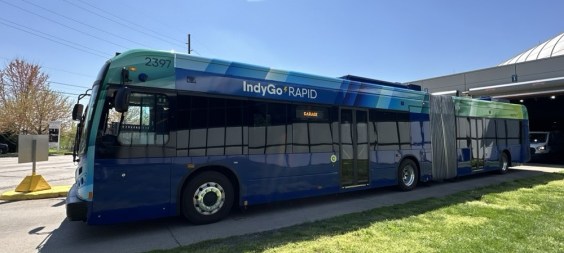MBTA staff have begun pitching local municipalities with what it hopes will be a major expansion of dedicated bus lanes across the region to support faster, more frequent bus service under the agency's proposed bus network redesign.
The T has recently begun sharing the map above with some of its municipal partners to win municipal support for its Bus Network Redesign initiative, which envisions a 25 percent increase in total bus service hours.
The centerpiece of the redesigned bus network would be around 30 "high-frequency" bus routes, which would offer a bus arriving every 15 minutes or better between from 5 a.m. until 1 a.m., 7 days a week.
MBTA officials have said that the proposed new bus network won't work unless municipalities set aside more dedicated bus lanes on local streets to help prevent buses from getting stuck in traffic.
In a 2022 press briefing on the proposed new bus routes, former MBTA General Manager Steve Poftak said that the increase in bus service would also be contingent on building new bus garages for a new fleet of electric buses, "and also adding bus priority infrastructure across the system."
In the City of Cambridge, where a citizens' advisory committee has been working on plans for reconfiguring Massachusetts Avenue north of Harvard Square, MBTA staff shared the map at the top of this article at a project meeting last month.
A caption on the map explained that "MBTA's Transit Priority Vision corridors are identified based on service offering (bus network redesign frequency), social benefit (existing bus and passenger delay), and passenger experience (speed and runtime variability)."

According to the meeting minutes, Becca Wolfson, a project manager for the T's Transit Priority planning group, told City of Cambridge officials and residents that "the MBTA has identified Mass. Ave. as a key corridor that would warrant transit priority" (editor's note: Wolfson is also the former Executive Director of the Boston Cyclist's Union, and a former member of the StreetsblogMASS Board of Directors).
Dozens of local streets targeted for new bus priority infrastructure
Under the T's proposed bus network redesign, both the Route 1 (from Harvard Square to Nubian Square) and the 77 (from Harvard to Arlington Heights) would be part of the high-frequency bus network, and would generally retain their current route configuration along Massachusetts Avenue.
There are already dedicated bus lanes in place on several segments of Massachusetts Avenue, including parts of the Harvard Bridge across the Charles River and in North Cambridge. The T's map suggests that the agency would like to fill in some of the gaps, particularly through the Back Bay and South End of Boston, and north of Harvard Square.
It's important to note that "bus priority" need not necessarily mean dedicated bus lanes. It could also involve reprogramming traffic signals to give a green-light preference to approaching buses, or redesigning bus stops so that drivers don't need to weave in and out of traffic to pick up passengers.
Still, dedicated bus lanes – particularly center-running bus lanes, which scofflaw drivers are less likely to block – stand out as an unusually effective way for cities to improve their transit service.
Most of the streets highlighted in the map above as having "existing" bus priority infrastructure are streets with dedicated bus lanes.
Other noteworthy segments on the T's bus priority wish-list include:
- Brookline Avenue in the Longwood Medical Area, a notoriously congested four-lane city street where the T would like to run several new high-frequency bus routes;
- Hyde Park Avenue south of Forest Hills, where the City of Boston had started planning for new bus lanes on the eve of the Covid-19 pandemic;
- Arsenal Street in Watertown and Western Avenue in Cambridge, two streets that will bookend a new center-running busway that's being planned for Western Avenue in Allston;
- The entirety of Harvard Street through Brookline;
- Columbia Road in Dorchester;
- Meridian Street in East Boston;
- Second Street between Chelsea and Everett, a critical link for the new, frequent-service Route 104, which would run from Logan Airport through Chelsea and Everett to downtown Malden;
- Berkeley Street in Boston's South End, which a reconfigured, frequent-service Route 9 would use to connect South Boston to Back Bay. The City of Boston is also planning new protected bike lanes for the northern segment of Berkeley Street.
Bus network on Tuesday's board agenda
The MBTA's bus initiatives will occupy a significant portion of the agenda for this week's MBTA board meeting.
In addition to an update on the bus network redesign, board members will also hear updates on two major bus garage projects – the delayed construction of the new Quincy bus garage, and the renovation of the North Cambridge garage.

The agency had originally planned to start implementing new bus routes in its redesigned bus network in phases, starting this year.
But in June, MBTA officials acknowledged that they needed to address a severe shortage of bus drivers first.
“The specific route changes associated with bus network redesign are on pause,” said Kat Benesh, the MBTA’s Acting Deputy Chief Operating Officer, at June’s MBTA board meeting.
However, this summer's approval of a more generous labor contract has helped the T recruit more significantly more candidates in recent months.






